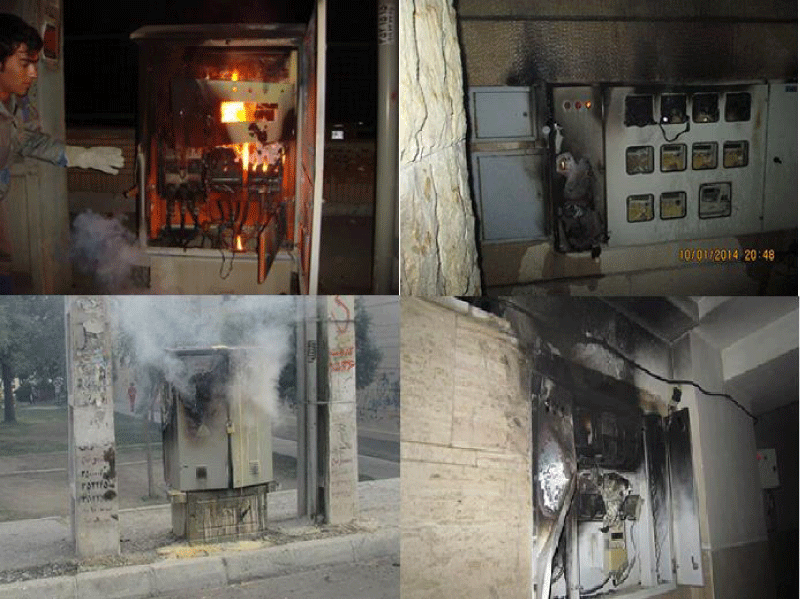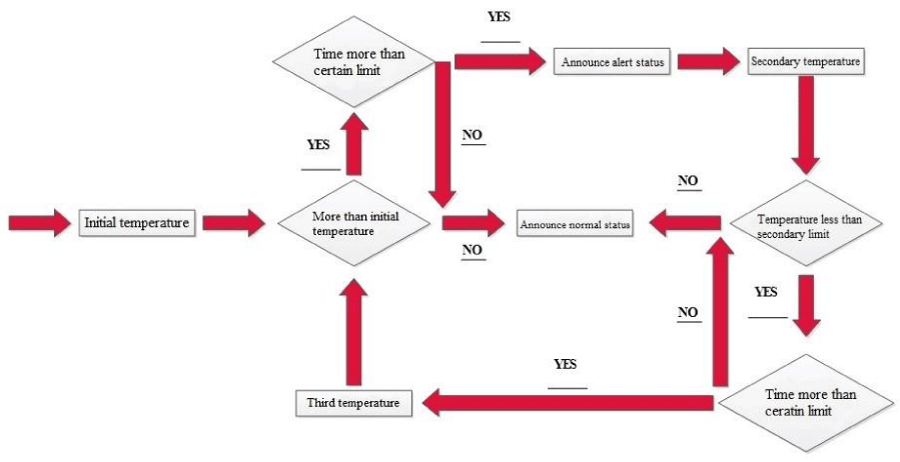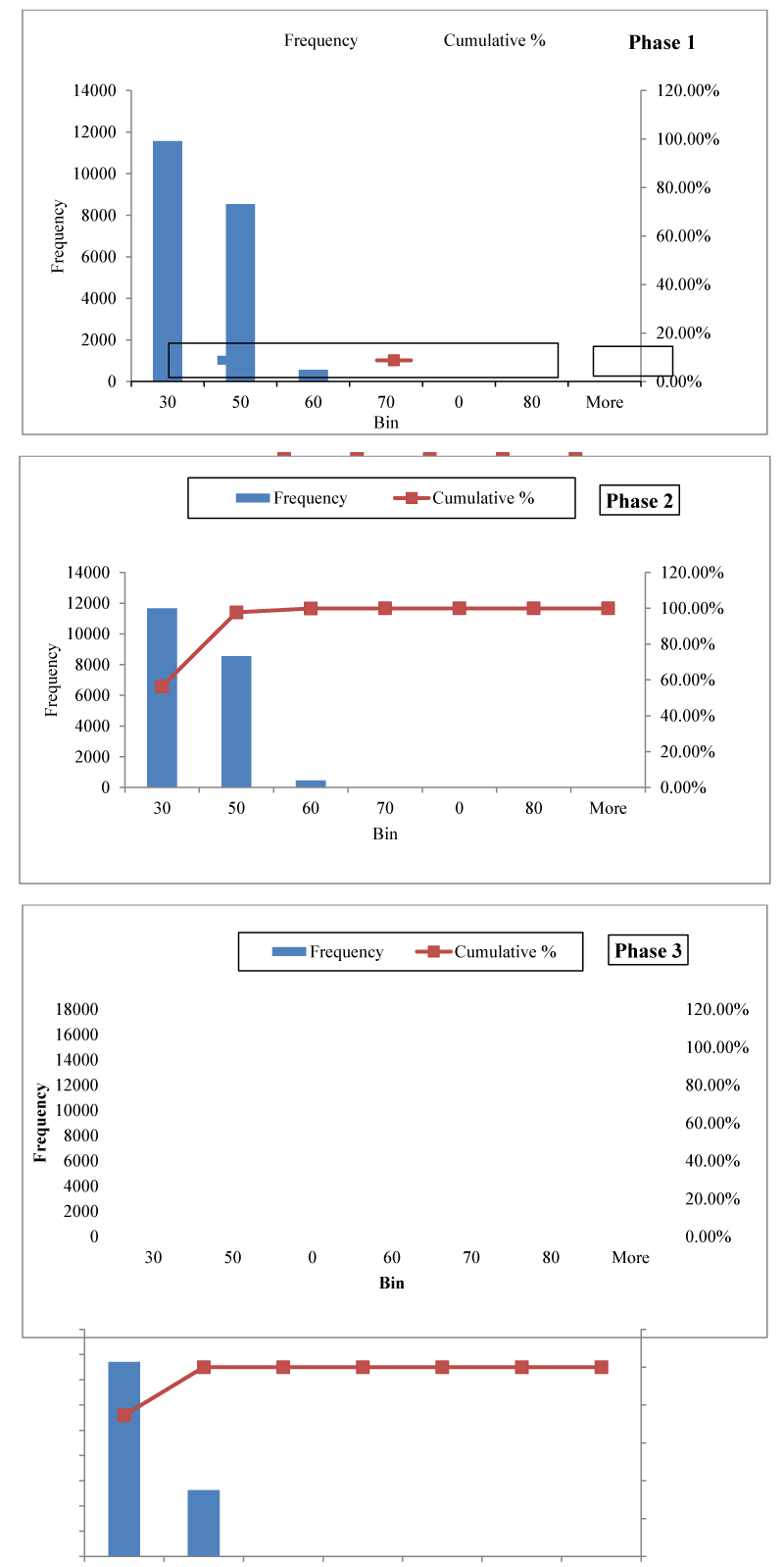Annals of Environmental Science and Toxicology
Providing a HSE system for intelligent temperature control of urban equipment (electrical panels) and fire prevention based on the integration of concept models and programming of AVR microcontroller (Case study of Mashhad) as a smart city implementation
Bita Deravian1, Behzad Deravian2, Seyed Mohammad Khatibi3, Reza Aghlmand4 and Mohammad Gheibi4*
2Department of Artificial Intelligent, Bright Talent Group of Computer Science, Tehran, Iran
3Department of Electronic Engineering, Shahid Montazeri, University, Mashhad, Iran
4Department of Civil Engineering, Ferdowsi University of Mashhad, Mashhad, Iran
Cite this as
Deravian B, Deravian B, Khatibi SM, Aghlmand R, Gheibi M (2021) Providing a HSE system for intelligent temperature control of urban equipment (electrical panels) and fire prevention based on the integration of concept models and programming of AVR microcontroller (Case study of Mashhad) as a smart city implementation. Ann Environ Sci Toxicol 5(1): 090-093. DOI: 10.17352/aest.000043Today, smart city approaches are considered as a key to solving the problems facing metropolises. However, using this approach, the costs of investment, operation, and maintenance of infrastructure in cities will be significantly reduced. In this study, a system for intelligent temperature control of urban equipment (electrical panels) and fire prevention based on a combination of concept models and programming of AVR microcontroller was designed. Then, the data obtained from the sensors (installed in the aerial panel of one of the streets of Mashhad) were analyzed by the SPSS software model. The results of the analyzes showed that the highest accumulation of data was at temperatures below 30°C and statistically, the normal distribution was skewed to the right. The temperature data received from the sensors for phases one, two, and three have a median of 26, 29 and 29°C, respectively, which indicates; Temperatures of 75 to 81°C are selected correctly as warning values. Considering the results of this study, it became clear that the present system can be very effective in monitoring, controlling, and monitoring the health of urban electrical panels.
Introduction
One of the main requirements for the operation of urban equipment is to pay attention to the principles of maintenance and repairs, and failure to pay attention to this issue annually causes extensive financial losses [1]. At the same time, field studies show that the maintenance process for small equipment is very difficult and complex and requires a lot of manpower [2]. Therefore, the use of inexpensive sensor equipment can fill this management gap and lead to maintaining the safety and health of the equipment [3]. Implementation of sensor networks and consequently analysis of collected data for optimal management of urban facilities is one of the main goals of the smart city. In fact, with the help of integrated telemetry, in addition to reducing human error, it is possible to help increase the efficiency of the equipment [4]. Switchboards are one of the main components of electrical monitoring systems, which are generally divided into home, air, and street types. However, with the help of analyzing the temperature information of electrical panels, it is possible to measure the consumption in different urban areas (even separately for subscribers), possible breakdowns of current transformers (to control power losses), and fire prevention (especially in peak times) [5-7]. Moghavvemi et al. (2001) Using AVR microcontroller system programming, designed a low-cost remote control system for temperature and humidity in municipal facilities and developed its applications [8]. In another study, Coopmans and Chen (2008) designed a monitoring package and low-cost, low-volume data loggers using AVR microcontroller programming [9]. Simić (2014) designed and developed sensor systems for measuring temperature and humidity in servers using an AVR microcontroller system [10]. In this study, the main goal is to create a system for intelligent temperature control of urban equipment (electrical panels) and prevention by using conceptual modeling methods (to determine the logic of management programs and performance of the smart city-based system) and AVR microcontroller programming.
Materials and methods
Case study
All the studies conducted in this research are related to home, weather, and street signs in Mashhad. Meanwhile, based on face-to-face interviews with the Mashhad City Distribution Company, large costs are incurred annually due to the fire of electrical panels in infrastructure and urban facilities (Figure 1). Especially in peak consumption conditions, in addition to the heat generated by the flow of current, the high temperature of summer (peak consumption period) is caused by more and leads to financial losses to the electrical panels. It can also cause casualties in acute cases due to violation of HSE principles.
Alarm management algorithms
One of the main goals of the smart city is to stabilize urban resources, property, and assets. This conservation of resources in electrical infrastructure is done in the form of an intelligent structure based on the principles of alarm management. The warning logic in this system is shown in Figure 2.
In this algorithm, the threshold of the primary and secondary temperatures of the electricity (°C) are equal to 62 and 55 (for domestic), 70 and 65 (for street), and 81 and 75 (for air), respectively. A specific limit time of 5 minutes is also considered in this study. It should be noted that these numbers were selected based on trial and error method and based on the experience of operating urban facilities.
AVR programming and statistical analysis
In this study, all microcontroller programming was done to design electronic boards in the Code Vision environment and electronic simulations in the Proteus environment. However, all the results in this study will be based on the aerial table. Also, all descriptive statistics analyzes were performed in the SPSS software environment.
Results and Discussion
After designing, manufacturing, and programming the temperature control system of electrical panels (in Code Vision environment), the mentioned system should be installed in the aerial panel of one of the streets of Mashhad. The results of the statistical analysis of temperature changes are shown in Figure 3 and Table 1. It should be noted that the relevant results are in the peak of electricity consumption (summer of 1998) and conditions of temperature crisis and the probability of fire is higher than ever.
As shown in Table 1, The maximum, minimum, average, average, and temperature modes of the aerial switchboard for all three phases of the output bus are equal (47, 62 and 61), (10, 13 and 12), (26, 29 and 29), (26.33, 30.8 and 30.7) and (25, 26 and 25) degrees Celsius. Also, the normal temperature distribution curve has a skew to the right, which indicates a high accumulation of data in values below average.
Considering Figure 3, it can be seen that the maximum amount of data is accumulated in values less than 30°C. However, it should be noted that data above 60°C make up a small percentage of the data received. As shown in Table 2, the number of data above 70°C in phases 1, 2 and 3 has been reported as 1, 23 and zero, respectively. Preliminary analyzes show that the received data (more than 70°C) is related to the peak consumption in summer and are realized cross-sectionally in some periods.
Conclusion
One of the main problems of urban management is the maintenance and repair of existing infrastructure in cities as potential assets. However, the maintenance and repair of urban equipment in the traditional way is very expensive and not easy. Therefore, the results of scientific and practical research showed that the use of smart tools (in the smart cities approach) can increase the life of urban equipment and devices. In the meantime, this study introduced a system for intelligent temperature control of urban equipment (electrical panels) and fire prevention based on a combination of conceptual models and programming of AVR microcontroller. The results of the analysis showed that by using the mentioned system, all the temperature data of the electrical panels can be observed, and by observing a series of requirements of operation and urban management, it can control the breakdown and fire.
- Roy VBR, Dessai S, Yadav SSP (2009) Design and development of ARM processor based web server. International Journal of Recent Trends in Engineering 1: 94. Link: https://bit.ly/3ynMQBQ
- Simic M (2013) Microcontroller based system for measuring and data acquisition of air relative humidity and temperature. In 37th International Conference of IMAPS-CPMT Poland. Link: https://bit.ly/3xj5lpW
- Li N, Tang YG (2013) Library temperature and humidity remote control system based on micro controller unit. In Applied Mechanics and Materials. Trans Tech Publications Ltd 341: 690-693. Link: https://bit.ly/3iqg6md
- Filibeli MC, Ozkasap O, Civanlar MR (2007) Embedded web server-based home appliance networks. Journal of Network and Computer Applications 30: 499-514. Link: https://bit.ly/3jiUjfm
- Hariyale I, Gulhane V (2012) Development of an embedded web server system for controlling and monitoring of remote devices based on ARM and Win CE. International Journal of Recent Technology and Engineering (IJRTE) 1. Link: https://bit.ly/3fscfTI
- Sunny S, Roopa M (2012) Data acquisition and control system using embedded web server. International Journal of Engineering Trends and Technology 3: 411-414. Link: https://bit.ly/3jhsfcb
- Tan T (2004) Embedded ATMEL HTTP Server. Diss. Cornell University. Link: https://bit.ly/3iiYPek
- Moghavvemi M, Faruque MO, Eng NK, Yip SC (2001) A simple low cost data acquisition system for remote sensing of relative humidity and temperature. In Proceedings of the 44th IEEE 2001 Midwest Symposium on Circuits and Systems. MWSCAS 1: 202-206. Link: https://bit.ly/3xmxAnF
- Coopmans C, Chen Y (2008) A general-purpose low-cost compact spatial-temporal data logger and its applications. In 2008 IEEE AUTOTESTCON. IEEE 64-68. Link: https://bit.ly/3A4nFVA
- Simić M (2014) Design and development of air temperature and relative humidity monitoring system with AVR processor based web server. In 2014 International Conference and Exposition on Electrical and Power Engineering (EPE) 038-041. Link: https://bit.ly/3Cca28s
Article Alerts
Subscribe to our articles alerts and stay tuned.
 This work is licensed under a Creative Commons Attribution 4.0 International License.
This work is licensed under a Creative Commons Attribution 4.0 International License.




 Save to Mendeley
Save to Mendeley
